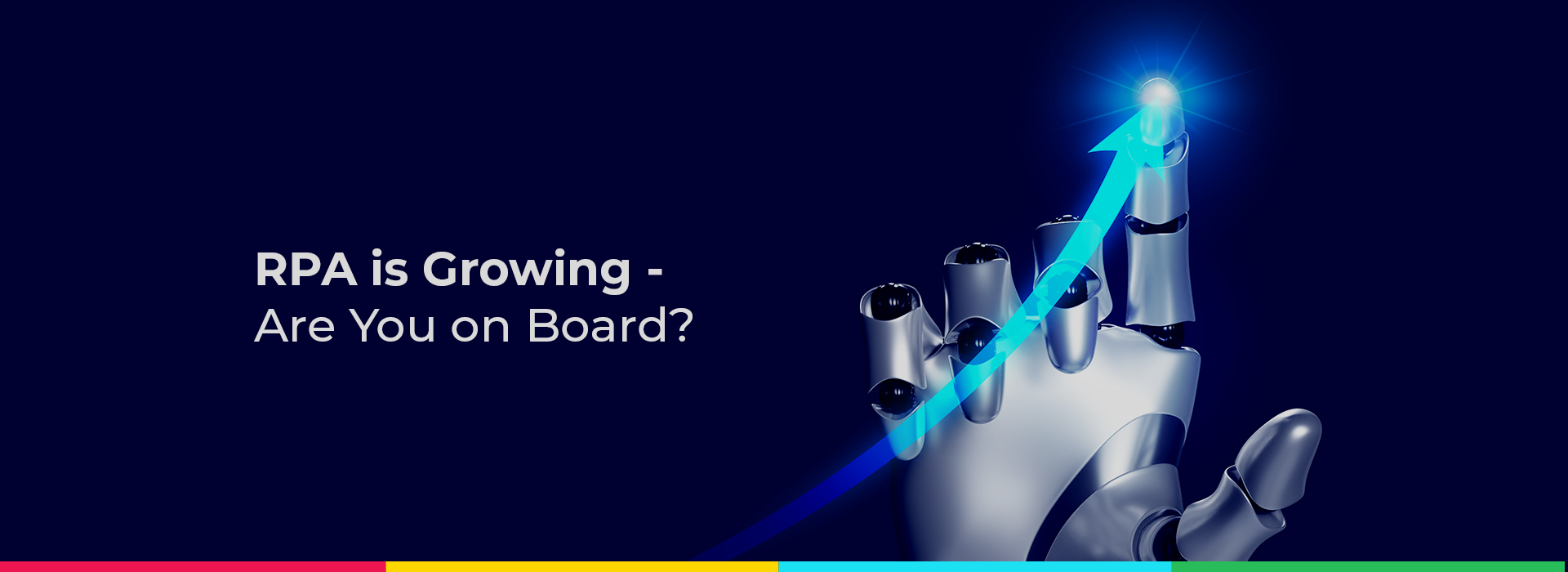
Blog
How to Plan for Robotic Process Automation ROI
Enjoy the Benefits of Robotic Process Automation
One of the classic leadership books of all time is Stephen Covey's, The 7 Habits of Highly Effective People. He identified Habit 2 as, "Begin with the End in Mind". This leadership concept is also critical to the success of any RPA implementation to justify and validate your robot process automation ROI.
Two things must happen to plan your RPA ROI implementation before you develop an automated process:
- First, analyze the process to determine if it satisfies key RPA selection criteria.
- Create a business case for implementing the automated process to align with expected business outcomes.
8 Key RPA Selection Criteria
There are basic questions you need to ask when assessing a business process for an automation opportunity. These criteria are weighted by varying measures and will have a fundamental impact on the ROI for robotic process automation. The selection criteria determine if the automation will be simple, medium, or highly complex to develop.
1. Is the process rules-based?
This means do the activities performed have clear processing instructions (template based), with decision making based on standardized and predictive rules? Setting up a new supplier, customer or employee are good examples of process rules-based processes.
2. Does the process have standard, readable input?
Automated processes require standard, readable electronic input with consistent results. Examples include readable input types like Excel, Word, email, XML, PPT, and readable PDFs. Handwritten documentation requires more sophisticated technology such as AI and machine learning.
3. Does the process have low exception rates?
Activities with a low number of variation scenarios existing in the process leading to different handling procedures. A non-PO AP invoice might be an example of a standard process with a low exception rate. An AP PO invoice with three-way matching could be an example of a high exception rate. This would require a tool for documentation understanding to extract data from forms, invoices, etc., and machine learning from users.
4. Will there be any system or process changes in the next 6 to 12 months?
The processing method cannot be changed. Fundamental changes are not required for the underlying technical architecture of the current system. It should be obvious that if the process or system changes, the trained Robot will not know what to do.
5. Is this a stable, well-documented process? How many process steps involved?
The process should be well documented, stable, and predictable.
6. How many applications are involved?
More applications can make development more complex.
7. Are there high volumes or frequency of the process?
Transactions that occur frequently or with high volumes are invoicing, reading, and assigning emails, attaching documents, and so forth.
8. Is the process highly manual and repetitive?
Reports, activities, or transactions that are highly manual and repeatable.
Business Case Justification
There are several reasons for automating a process such as cost, productivity, quality, and compliance. It is critical that you capture a business case with key performance indicators to determine ROI for RPA. By properly planning for and reporting on these measurable activities, you can easily quantify the money and time saved by your automation and benchmark the efficiencies and performance over time.
A simple business case to measure the costs and benefits of an automated process over a period looks something like this:
- Cost savings can be labor savings on the hours saved through automation (be sure to use your burdened rate with all taxes and benefits), material savings, storage savings, and so forth.
- Productivity can be creating more sales, hence more revenue by processing more transactions or receiving on open purchase orders faster to take advantage of discounts on payment terms by paying early.
- Quality can be a reduction in data entry errors.
- Compliance can be industry regulatory requirements that will have a cost but can be completed faster, more frequently, and with no errors such as claims processing.
NITCO’s partner UiPath has made capturing this information easy to plan for using Automation Hub which is agnostic of any automation tool and uses algorithms to calculate the ROI based on key selection criteria and business case validation. In addition, they have released Insights to measure the actual outcomes and link them to your business bottom line.
Contact us at YourDigitalTechnologyPartner@nitcoinc.com to find out how our digital automation experts can partner with you.




 US Headquarters
US Headquarters India office, Hyderabad
India office, Hyderabad